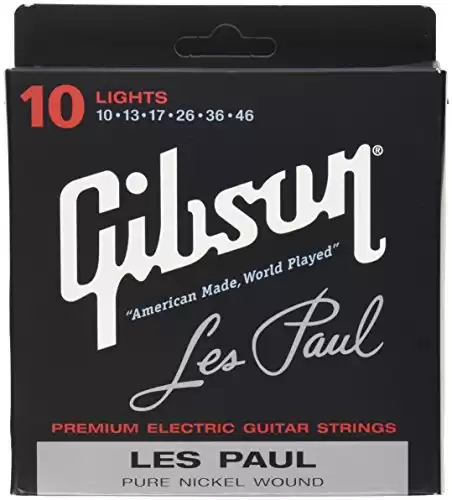After you learn a few chords on the guitar, the time arrives to start improving your strumming technique.
The guitar is a fun instrument to play that most people love. If you have sloppy playing, you won’t get much of an audience!
This guide will help you enhance the notes and chords you want people to hear while eliminating the unwanted noise.
How to Stop Unwanted Guitar String Noise
Two unwanted noise issues develop when playing the guitar. A strum can have different pitch sounds from other strings or squeaks from finger movement. These issues stop with firm finger placement and accurate strumming.
Sloppy guitar technique rarely causes errors on the notes you want to play.
The issue that develops involves unwanted noise from other strings or how your fingers interact while creating chords.
Although you can mute unwanted noises from guitar strings in multiple ways, only a handful of techniques work well while playing.
It is up to you to determine which one is the most advantageous for your strumming methods.
How to Mute the Lower Strings with Your Palm
Most guitar players mute the lower string sounds with their palm while playing.
Although it is a challenging technique to develop at first, most guitarists pick it up naturally as they learn the instrument.
Even though it is the primary method used to stop unwanted guitar string noise, several problems develop when using your palm.
- As you switch chords or strings, your palm needs a moment to start the muting process from what you strummed. That means you still have unwanted noise for a second or two until you stop the vibration.
- Your skin is softer on the palm because it doesn’t interact with the strings in the same way your fingers do when playing. That means it requires more time to stop the sounds, and the experience could be painful for some players.
- Guitar players with smaller hands might not have the right spacing or reach to mute the strings with their hands while strumming.
You’ll also notice that a natural guitar strum takes your hand away from the strings instead of toward them. That makes it even more challenging to mute the unwanted sounds because it must happen through the motion.
Even on rapid strums that use downward and upward action, your palm naturally moves away from the strings.
■ An Alternative to Muting Strings with Your Palm
Instead of using your palm to mute the unwanted guitar sounds, try using your thumb on the picking hand instead.
This technique reduces your hand movement through each strum, improving the consistency of each chord.
As you become familiar with this technique, you might notice your picking speed improves.
This technique’s disadvantage is that it works better for fingerpicking or slow strumming instead of power chords.
It will only work for the lower notes you don’t want to be included in your notes or chords. If you’re going to mute higher tones, you’ll need to use a different method.
How to Mute the Higher Strings on a Guitar
Most guitar players know how to mute the lower unwanted sounds that develop when strumming.
When higher tones are part of the mix, it is not unusual to see players accept the noise pollution because they are unsure of how to stop the problem.
Ignoring the thinner strings causes sloppy guitar playing because the sounds can overwhelm the harmonies below the unwanted tones.
You can select one of two options to solve this issue.
- Use the underside of the fretting hand’s index finger to lightly touch the higher strings that require muting. You cannot press firmly as this action might change the sound of your chord.
- Take the unused fingers of your picking hand to calm the thin strings as you strum to prevent the unwanted noise from infiltrating your chords.
If you can perform both techniques, you’ll have fewer issues with the higher tones interfering with your chords.
It would be best if you pressed lightly and accurately to achieve a successful result with the thinner strings.
Any finger motions can cause squeaking within the strum.
This effect is especially prevalent with steel strings on an acoustic guitar.
How to Stop Finger Squeaks on Your Guitar
Whether you love it or hate it, finger noise is part of the guitar playing experience. The actual amount a listener hears is dependent on your technique.
If you hear multiple squeaks every time your fingers change chord placement, it is time to practice your sequences!
Eliminating all finger squeaks can be challenging, but it isn’t an impossible task. If you play classical guitar, these tips can help you have a successful outcome.
1. Lift and Shift.
As you lift your finger during a chord change, you’re eliminating the drag along the string that causes squeaking. It takes practice to move your hand upward to prevent unwanted sounds from playing.
Be careful when trying this technique because most players end up lifting their fingers at an angle. This action requires more time to transfer notes or chords, resulting in a slower playing technique.
Angles happen when you lift and shift simultaneously. If you consciously practice lifting first, shifting second, and placing third, you’ll remove most of the unwanted noise.
2. Move Away from the Calluses.
Guitar players have callused fingertips because of the pressure placed on each string. If you need to reduce unwanted noise from the instrument, use the soft skin pads instead.
Callused skin always creates more squeaking than soft fingertips or pads. If you can’t avoid sliding up or down to the next chord, try rotating your fingers so that you move off of the tough stuff.
You can also use some petroleum jelly on your fingertips to soften the skin before playing.
3. Purchased Polished Strings.
If you purchase polished guitar strings, the ribbed surface becomes smoother. This product reduces squeaking because less friction occurs with your fingers.
It won’t get rid of the squeaking sounds entirely, but it will reduce them noticeably for you.
The downside of using polished strings for your playing is that they have a shorter lifespan than other products. If you are hard on your instrument, your guitar might need to get restrung after a couple of gigs or recording sessions.
Best Guitar Strings to Use to Eliminate Unwanted Sounds
If you want to improve your guitar playing experience, these strings can reduce or eliminate squeaks and other unwanted noises.
1- Martin & Co. Authentic Acoustic Strings
These fantastic guitar strings have a 92/8 phosphor-bronze composition to help you create pure tones with ease.
If you play classically on an acoustic instrument, you’ll love how each one sustains a note when plucked or strummed.
They’ll leave black marks on your hands, but they’re not the only product that will create that result.
These strings stay in tune well. The tension is excellent, especially if you use a larger dreadnought body. If you want pure sounds, these strings are worth the investment.
2- D’Addario XT Electric Guitar Strings
If you need an extended lifespan on your strings and prefer the uncoated variety, this product provides an excellent result.
You’ll get up to four times the use out of this product compared to its competitors!
It features great tuning capabilities with the high-carbon steel wire, providing a sustain that you won’t believe until your first chords.
The strings are a little slippery when you first use them, especially if you have callused fingertips.
Once you get used to the feeling, the brightness and tone will exceed your expectations.
3- Gibson Les Paul Premium Electric Guitar Strings
When you won’t settle for anything but the best, the Gibson Les Paul strings deliver the results you want to hear with every strum.
Their natural composition limits unwanted guitar string noise. The product features silk-wrapped ends, with a pure nickel winding, to create smooth tones and warm notes that can still deliver punchiness and sustain.
These strings are made in the United States and played in gigs and recordings worldwide because of their quality.
You’ll want to give them a little extra time to condition and stretch before playing them to maximize your investment.
Are You Ready to Improve Your Guitar Techniques Today?
If you are ready to stop unwanted guitar string noise, the first step of that journey is to improve your technique.
The best strings in the world cannot eliminate the unwanted sounds of sloppy guitar playing!
Once you have your plucking and strumming where it needs to be, consider upgrading your strings to reduce the unwanted sounds even more.
It takes a little practice to get all of these steps completed correctly. When you get it right, you’ll love the pure chords and tones your guitar creates!




